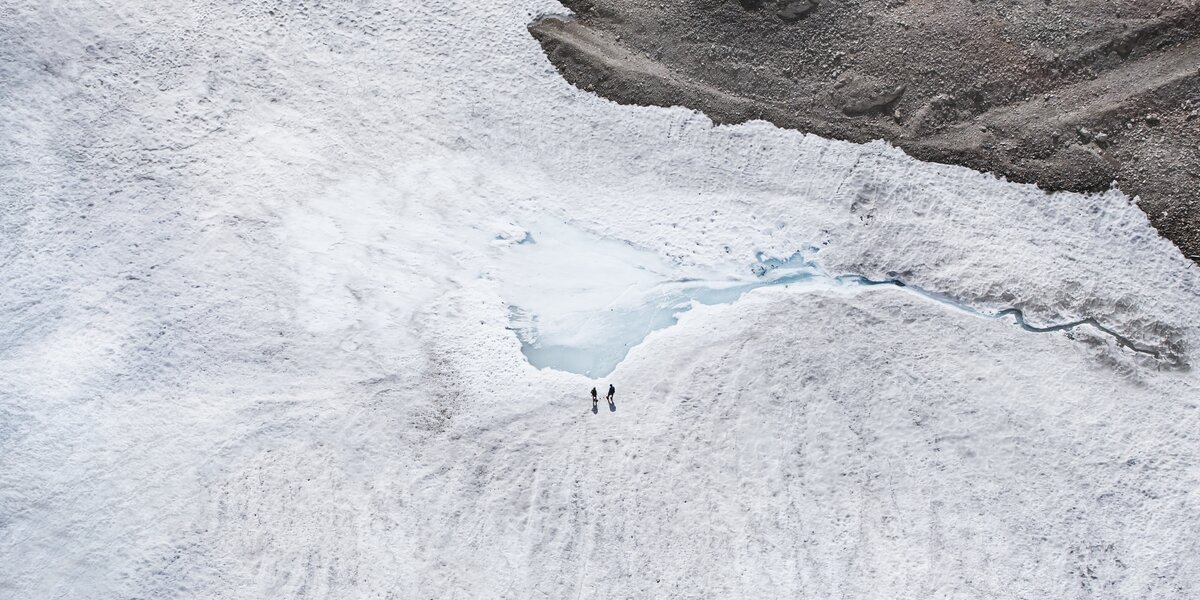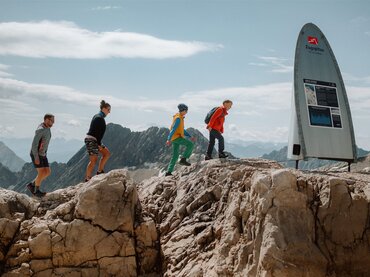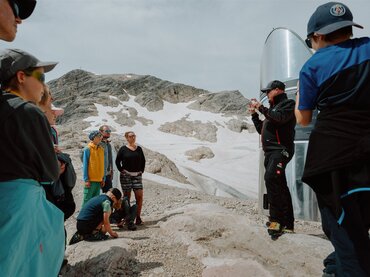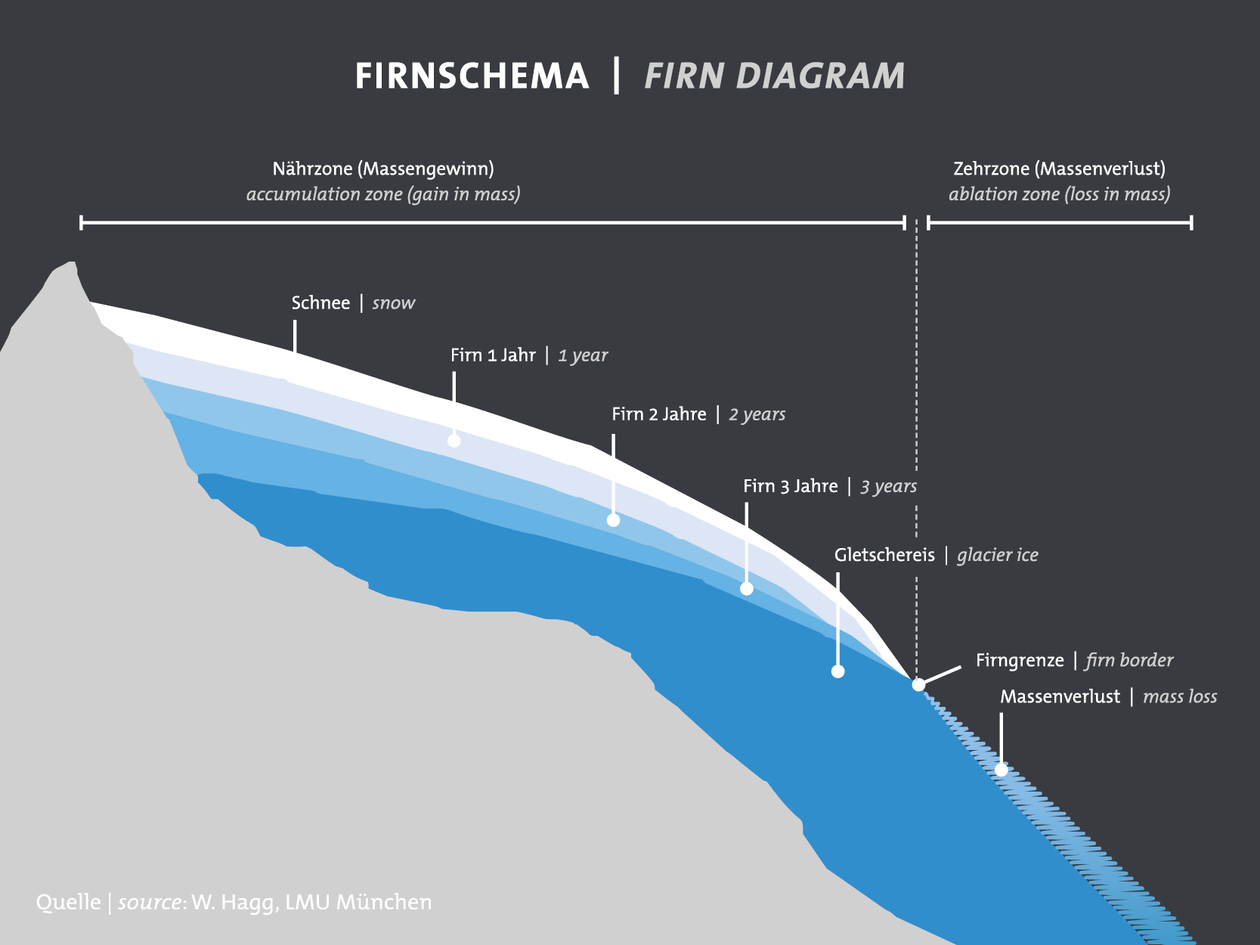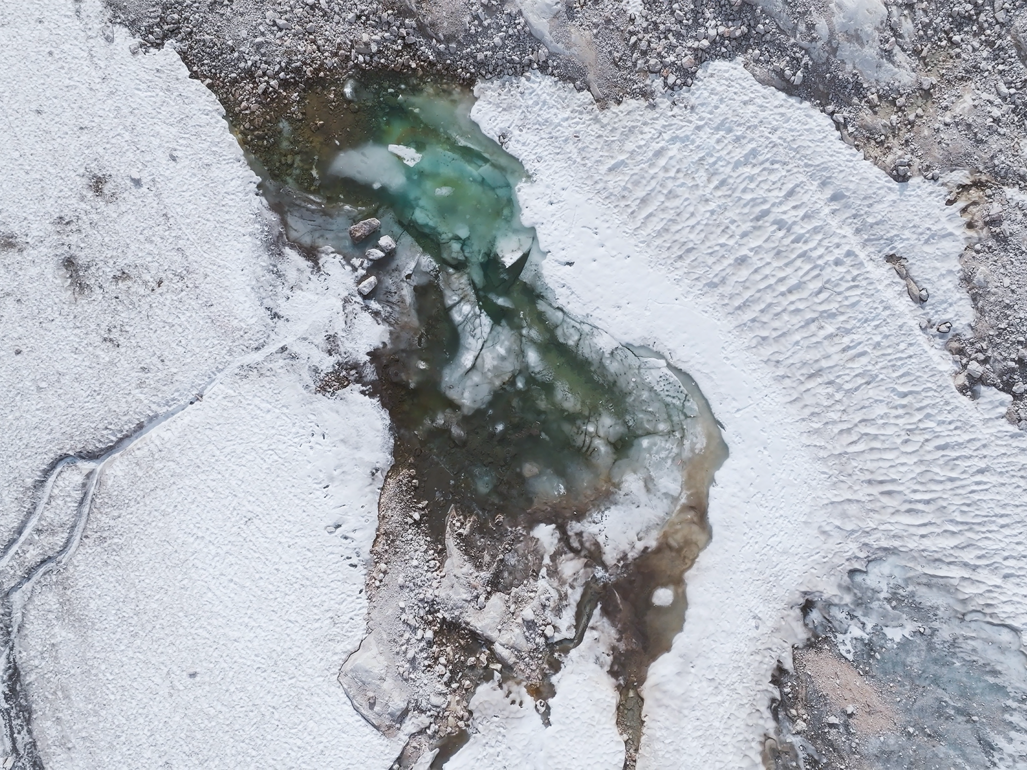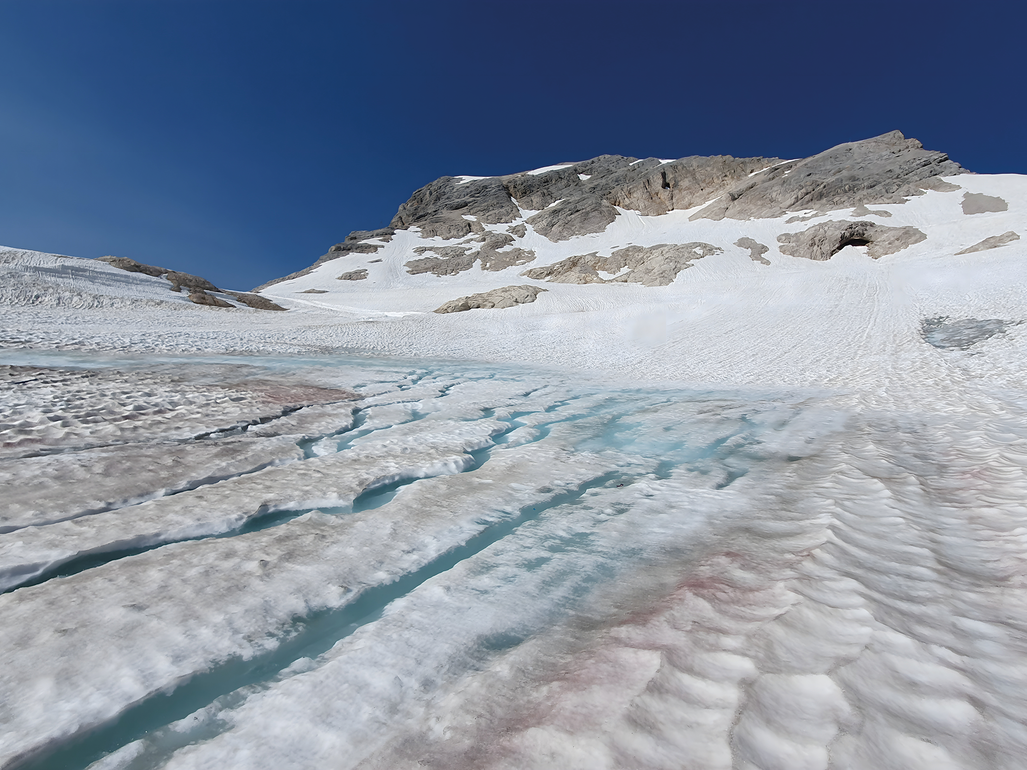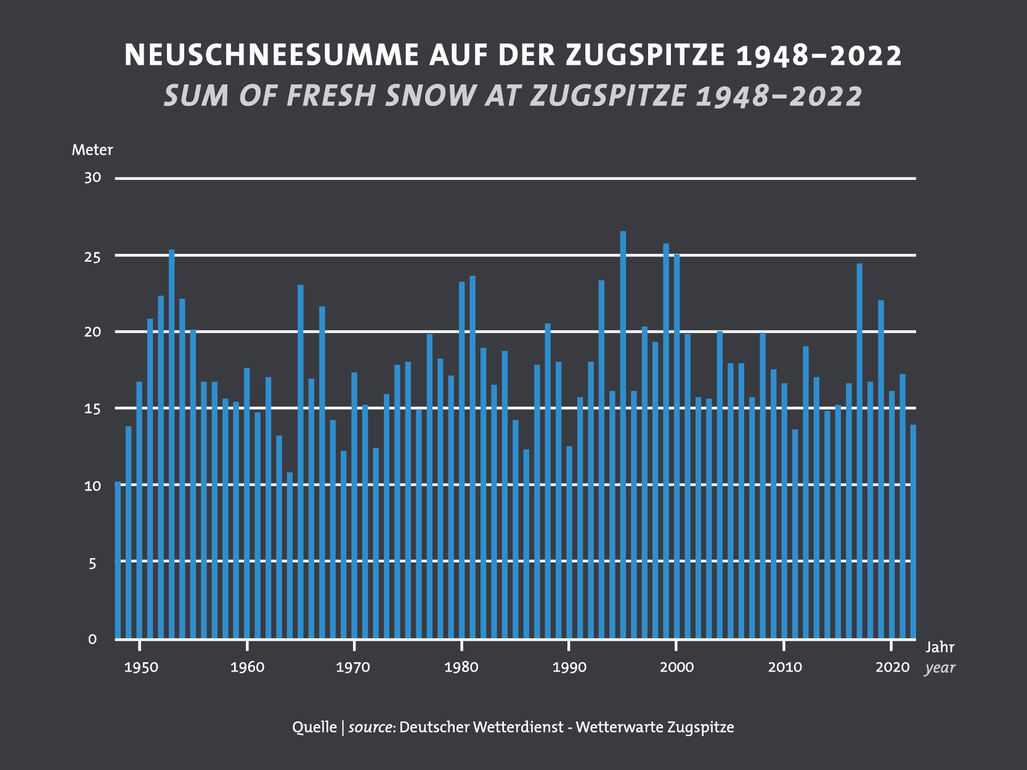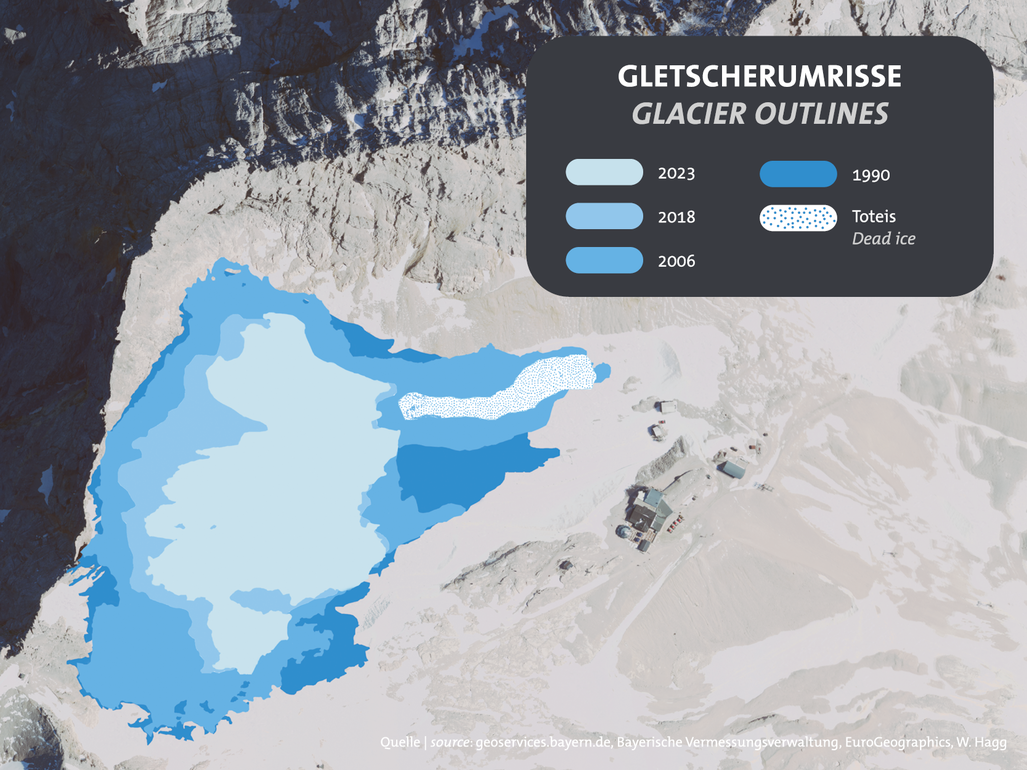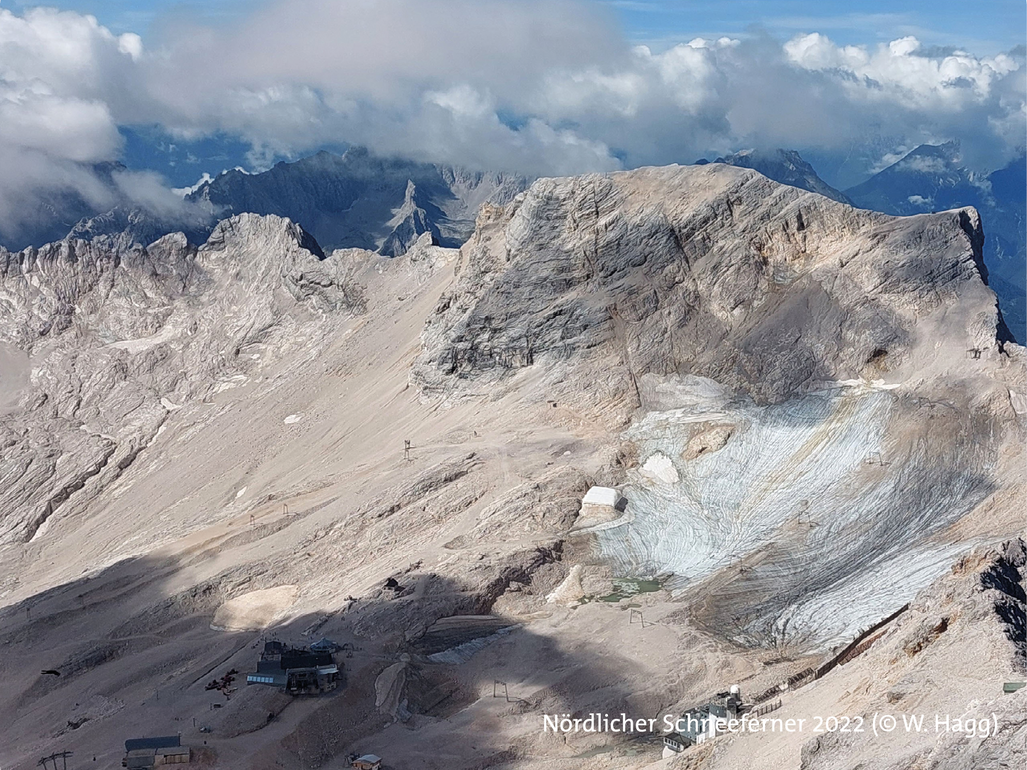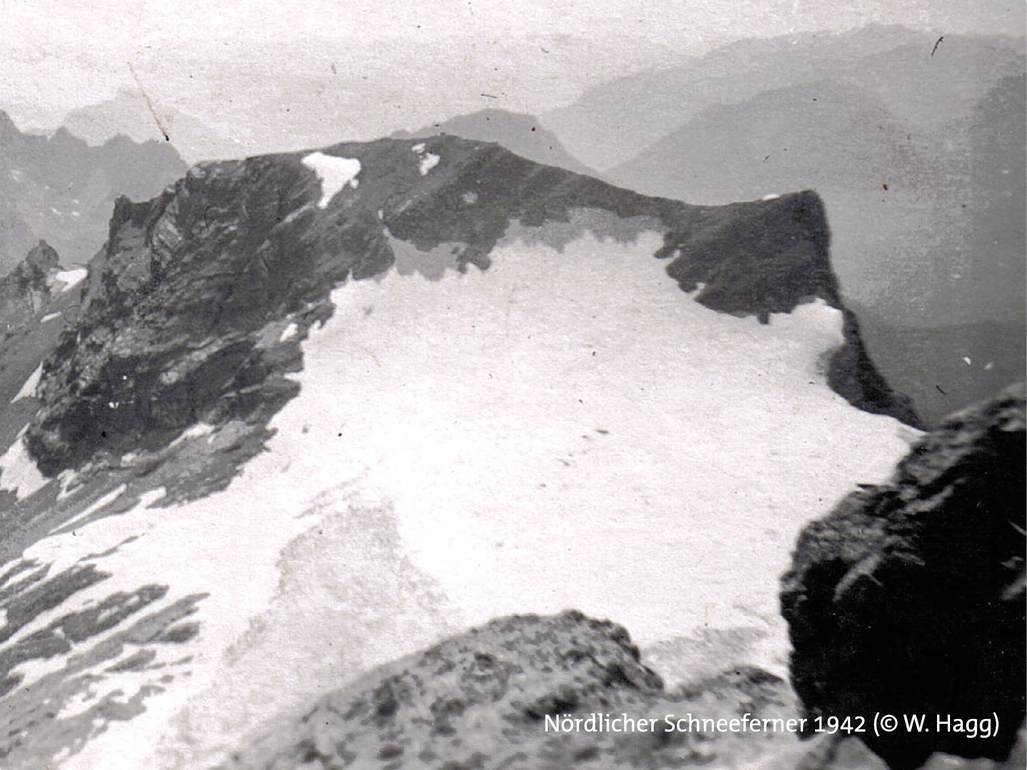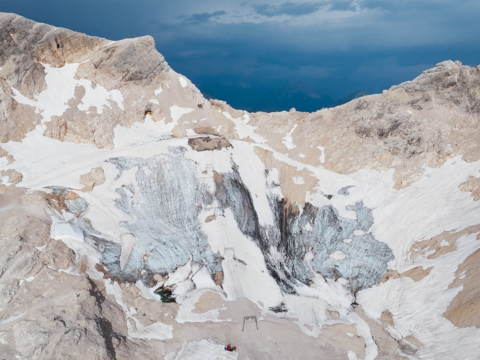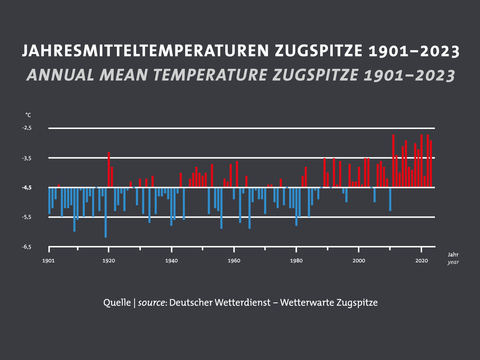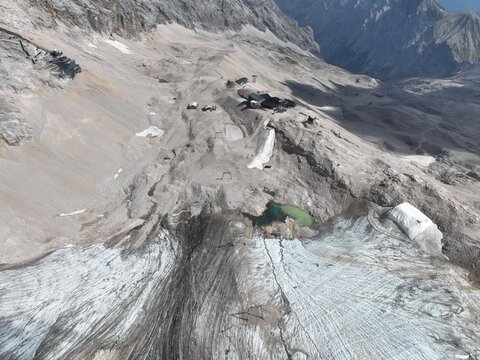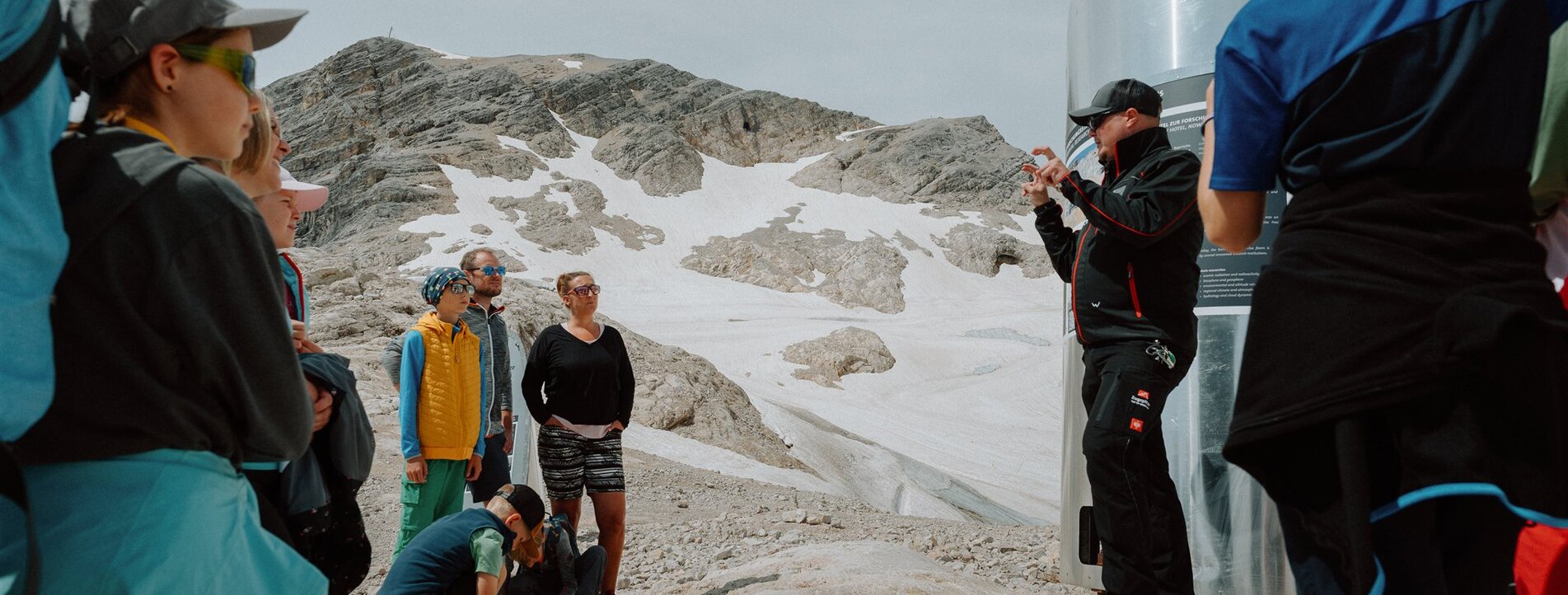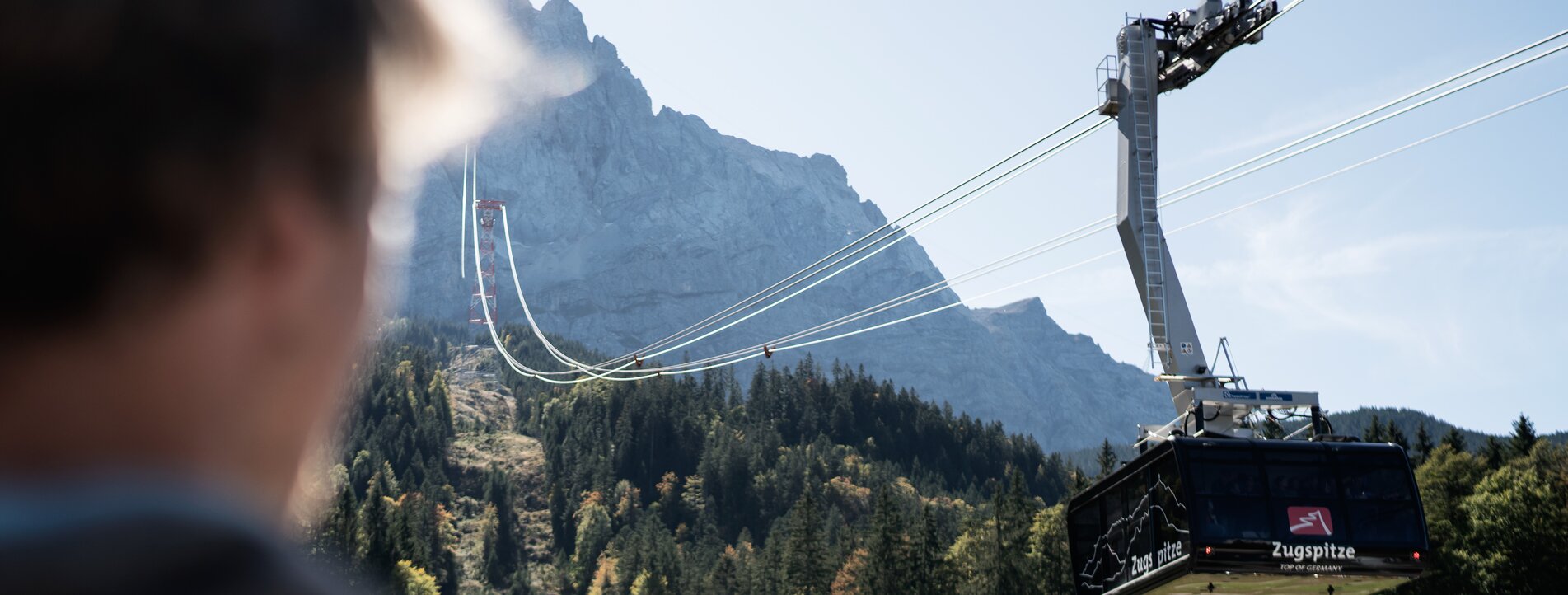Endangered worlds
at 2,600 metres above sea level
Farewell visit
on the Nördliche Schneeferner glacier
On Zugspitze you can find two of the last glaciers in Germany – the Nördliche Schneeferner and the Höllentalferner. Even in high summer you will feel the primal force of the elements and discover, how over millennial wind, snow, ice and sun have shaped the mountain landscape at 2,600 meters above sea level.
But also the „eternal ice“ on Zugspitze is actually threatened by global warming. Already in 2022, the Südliche Schneeferner at plateau Zugspitze has lost its status as a glacier. Now it is categorized as dead ice. The Nördliche Schneeferner will also be completely melted in a few years.
Farewell
Glacier loss on Zugspitze
Three perspectives of the Nördlicher Schneeferner on plateau Zugspitze.
What characterizes a glacier
A glacier can be divided into two parts:
- the accumulation zone in the upper part of the glacier
- the ablation zone at the bottom of the glacier
For the development and growth of a glacier snow is required. Fresh snow transforms into older snow, then into firn and last but not least into glacier ice.
With a certain amount of ice, the pressure on the ground combined with the tilt of the rock bed creates a high shear stress. The temperature at the rock bed rises by the shear stress and the glacier partially melts at the subsurface. On the meltwater the ice can glide on the ground – the glacier is flowing. By the gliding process, ice is transported from the accumulation zone to the ablation zone.
If more ice melts in the ablation zone than is created in the accumulation zone, the mass of the glacier is reduced. Over several years, the glacier melts and slowly disappears.
